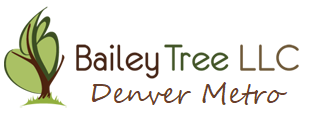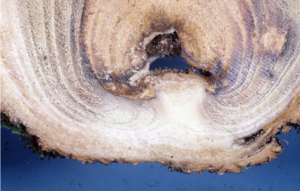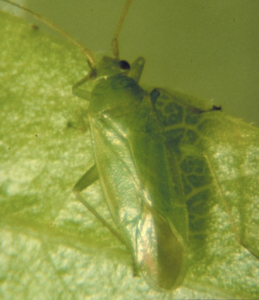The Many Curiosities of the Honeylocust Tree
Thyronectria canker
In previous years this infectious canker disease only infected older and extremely stressed Honeylocust species.
In recent years (other than spring of 2023 w/ our copious amounts of precipitation) we have been extremely warm, dry, and windy along the front range. These conditions have led to an increase in this fungal disease. During the peak growing season, if you have a mature, or over-mature honeylocust in turfgrass, your turfgrass is utilizing majority of the moisture. Particularly if it is in a tree-lawn-south, west or sloped area.
Although in theory large trees have a root system to source their own water, it is simply not enough.
Symptoms include:
- Dieback of large scaffolding branches (also associated with honeylocust borer)-not to be confused with squirrel damage.
- Cankers-discoloration-orangish areas with pimpled or sunken tissue.
- Fruiting bodies
- “Flagging” yellowing leaf foliage
- After years of activity dead branches experience bark loss
- The reddish color of the center of the branch is NOT associated with this disease.
Treatment: We have an extensive program to assist in the management of this disease. Please reach out to Bailey Tree today to schedule a visit from your local arborist.
If you need guidance on best management practices for watering, please contact Bailey Tree and to speak with your arborist.
Hop to it and curl me up, without borer holes please!
Honeylocust borer is an opportunistic insect that historically has only attacked stressed trees. However, with the high heat, wind, drought, and our caught-of-guard freezes in recent years it has begun an onslaught of honeylocust trees. It kills large scaffolding branches and is also associated with Thyronectria canker in some form.
The larvae feed on the tissue the tree relies upon to distribute nutrients and water up down throughout the tree. This disrupts the proper and appropriate distribution of nutrients and water, which leads to starvation of the branch and eventually death of the branch.
We can offer a treatment that is completed once a yar annually for your tree as a prevention to assist in the management of this insect.
Spider mites attack honeylocust trees of all ages and sizes. Can lead to reduced food production and reserves. They tend to feed on the underside of the leaves, as this provides them protection from the elements and natural predators. Trees in tree lawns or adjacent to parking lots, streets, curbs, brick, and/or concrete walls are mor prone to damage. The leaves will turn a bronze-orange color in late July to early August and will prematurely drop.
Honeylocust Plant bug and Honeylocust Podgall Midge are two leaf-feeding insects that attack honeylocust trees in the spring. They often attack around the same three-week period in May, although it can swing a bit based upon weather conditions an insect pressure. These two leaf-feeding insects do not result in death of any part of the plant. They are sap-feeding insects that cause disruption of food manufacturing, deformation of the leaves and reduced aesthetic value in the spring. We do have several treatment options for the management of these insects.
Please contact us at Bailey Tree for your local arborist to evaluate your tree if you have concerns regarding these insects.
Photo credits for this page:
Whitney Crenshaw, Colorado State University; Bugwood.org
Lacey L Hyche, Auburn University, Bugwood.org
John A. Weidhass, Virginia Polytechnic Institute and State University, Bugwood.org

 .
. 
